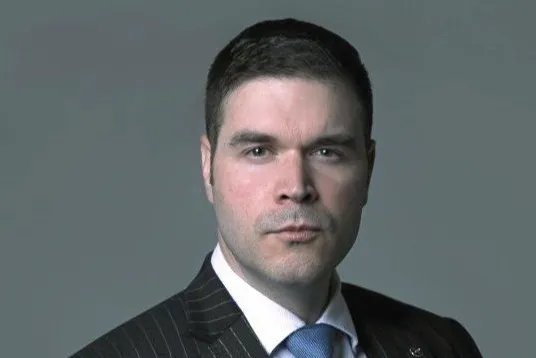'Floating wind is now a strategic asset for energy sovereignty'
OPINION | The floating wind power sector is increasingly being shaped by national agendas but its industrial future still hinges on innovation, argues Jon Salazar

The climate does not care who is in the White House. And yet, as the world faces an increasingly unstable geopolitical and technological landscape, the transition to renewable energy – and particularly floating offshore wind – is being shaped more by national agendas than by scientific urgency.
We are entering a new world – one where energy security, not just environmental sustainability or cost, is shaping investment and policy decisions. In this environment, nations are prioritising local, flexible, and resilient energy generation over imported or intermittent alternatives. This article argues that floating offshore wind has a critical role to play – not only in advancing decarbonisation goals, but also in strengthening energy sovereignty and delivering strategic security.
The return of President Trump to the international arena with a more organised and strategic plan has led to a sharp shift in the US climate policy. Lease auctions have stopped. Federal support has evaporated. A pipeline of over 80GW of floating wind capacity, once a hallmark of success under the Inflation Reduction Act, has ground to a halt, giving way to a far more uncertain terrain. But climate change has no patience for electoral cycles. Sea temperature is now a key performance indicator for the planet, not polling numbers.
The US political moment is real, and its inward policies will have ripple effects globally. But to think that the transition is dependent on Washington is naive. The rest of the world isn’t waiting.
In Europe, energy has become a question of defence. The UK and the EU are finally opening their eyes to the fact that energy resilience is a key component of national security. Britain is investing £55.7m into the Port of Cromarty Firth to support floating wind and aiming to hit 19.5 GW in a few years. The EU is planning for nearly 90 GW of capacity by 2030, and floating wind can open deeper waters and stronger wind speeds. This may be the wake-up call Europe needs to strengthen its position and integrate further.
Portugal, meanwhile, is gradually emerging as a beacon for floating wind innovation. Its government has set a 2GW by 2030, and 10GW by 2040 target, launched a 3.5GW auction and created Technological Free Zones to facilitate innovation. These are bold moves that are the product of a long-term strategy.
China is playing an entirely different game. With the support of strong central planning and local supply chains, it accounted for 76% of global offshore turbine orders in recent years and is expected to build up to 16GW per year through to 2027. The first floating wind farm in China, commissioned in 2023, marked the beginning of cost-competitive floating wind at scale.
However, for many in the West, China is still a black box when it comes to floating wind. The projects are taking place, but the level of disclosure is quite limited. Given the industrial capacity, policy support, and magnitude, China is well-positioned to become the world’s first and the biggest floating wind market.
South Korea, too, is asserting itself. With a 12GW target by 2030, and half of that set to be floating, Ulsan’s REC auctions and billion-dollar investments are clearly an effort to create a domestic supply chain while also attracting foreign players.
Some signs of promise are also beginning to emerge in Southeast Asia, including the Philippines and Vietnam.
Volatility a threat to floating progress
Despite this progress, the floating wind sector faces a momentum loss, and while the long-term trajectory remains clear, the current volatility of global decision-making threatens to slow investment.
One key factor increasingly shaping the pace of deployment is the cost of financing. As interest rates remain high and macroeconomic uncertainty looms, insurance premiums – especially for novel technologies operating in harsh offshore environments – are becoming a major component of project risk profiles. This in turn raises the cost of capital and therefore makes innovation not only a technical but also a financial issue.
There is a wider shift underway: Politics is now transactional. Nations are adjusting their policies to serve narrow domestic agendas. Investment cycles are caught in the crossfire. This new environment is defined by the return on equity and energy security – not by the concept of a ‘green premium.’
Artificial intelligence has become an existential priority for the major powers. That will not stop. Some countries are beginning to understand the need for more integrated approaches to AI, energy and resilience – but most are still playing catch-up.
Emerging economies are no longer just markets, but important drivers. With mass scale and cost competitiveness, they may end up doing the heavy lifting the developed world once promised.
Offshore wind’s future is not on hold, it’s shifting. As volatility rises, so too must our resolve. Breakthroughs will come from connecting the dots – particularly in technology, where innovation across platform design, mooring systems and anchoring technologies, digitalisation, manufacturing, and industrialisation could unlock the next wave of cost reductions and system integration.
Floating wind should not settle for scaling first-generation designs that were never optimised for cost. This is not a time to replicate fixed-bottom thinking at sea. What’s needed is a fresh wave of purpose-built innovation – especially in platform design and integrated control systems – to unlock the industrial potential of floating wind. The sector cannot afford to stagnate technologically just as the global opportunity is starting to heat up.
The energy transition is inevitable. The only question is whether we allow others to steer it or take on that mantle ourselves.